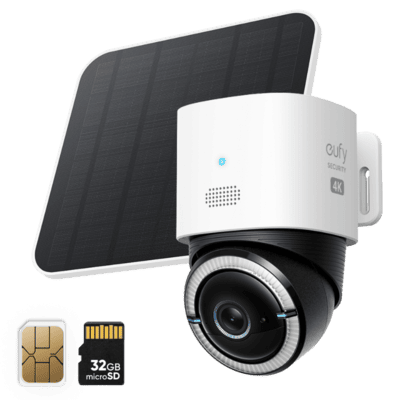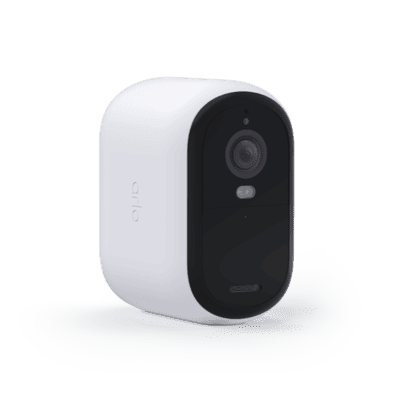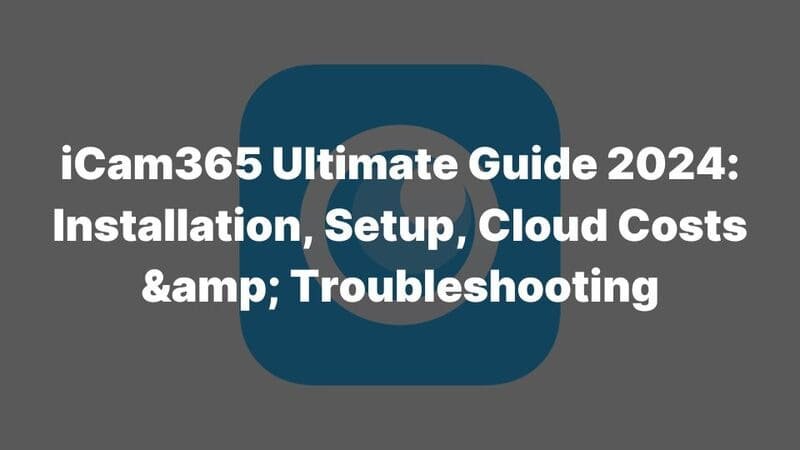4G Cameras Market Outlook
The Rise of 4G Cameras: Redefining Wireless Surveillance in 2025
I see the world market for 4G security cameras growing fast. People want dependable security they can check from anywhere. This demand comes from both developed and growing areas. Many homes, businesses, and public areas now seek wireless security. They need solutions that don’t depend on fixed wires or Wi-Fi.
Market forecasts show strong growth, in my view:
- The 4G LTE cellular security camera segment was worth $3.57 billion in 2023.
- Experts predict it will reach $6.6 billion by 2031. That’s an 8.82% CAGR from 2024 to 2031 (Market Research Intellect).
- Verified Market Research expects even faster growth. They predict the market will hit $4.45 billion by 2031. This is a 17.33% CAGR for that time.
Key Drivers of 4G Camera Market Growth
- Smart City Projects & Public Safety: Spending on smart cities is increasing. People are also more concerned about public safety. I think these are big reasons for growth.
- Consumer Preferences: Customers strongly prefer cameras with easy-to-use controls. They also want to access them via mobile devices. So, companies are focusing on simple apps. These apps let users watch live video, check remotely, and manage cameras in real-time using their phones.
- Technological Innovations: People are using more AI for energy saving. Solar charging and lithium-ion batteries are also common now. This makes portable and solar 4G cameras more popular, in my experience. These features are very useful in places without power grids or far away.
- Diverse Applications: We see more cameras used in many places. These include construction sites, farms, hotels, offices, storage areas, and wildlife parks. This shows people need security where connections aren’t stable.
Market Dynamics and Competition
- Big brands and new companies are both creating new things here.
- Newer companies are changing specific markets. Examples include AI for watching wildlife and special security for work sites. They use new tech and develop products quickly.
Based on my observations, 4G cameras keep growing. This means wireless security will be even more important for safety needs in 2025 and after.
What is a 4G Camera?
A 4G camera is a cellular-enabled surveillance device that transmits video and images over a 4G LTE network, eliminating the need for Wi-Fi or wired connections. These cameras have a built-in 4G LTE modem, allowing direct connection to cellular networks for real-time remote monitoring and data transmission from virtually any location, making them highly versatile.
Main Features of 4G Cameras
- No Wi-Fi Required: 4G security cameras work entirely on their own. They don’t need local networks or routers. This makes them perfect for places without internet, such as remote spots or off-grid locations.
- Real-Time Video Streaming: You can watch live HD video feeds. You can also access the camera from your smartphone or computer. It works whether you are close by or far away. I think this remote access is very convenient.
- Easy, Flexible Installation: You don’t need cables or a wired network setup. I recommend them for places like farms, building sites, vacation homes, or even temporary events because they are easy to set up.
- Good Image Quality: Many models I’ve seen give you HD video or even sharper 2K (2304×1296) pictures. They use CMOS sensors to capture clear video day and night. Some cameras can even turn 360° for a full view.
- Night Vision & Smart Detection: These cameras come with infrared or white lights for seeing in the dark. They also have smart motion detection. I appreciate that this helps reduce false alarms.
- Two-Way Audio: Some cameras let you listen in. You can also talk back through the camera. I feel this adds extra convenience and security.
- Flexible Storage: You can store video in the cloud. Or, you can save it on a microSD card right in the camera for easy backup and access.
- Multiple Power Options: Models often include long-life batteries (like 9000mAh). They can also connect to 3W or 5W solar panels. This helps them run all the time, even without a standard power plug. I suggest looking into solar options for continuous use.
- Low Power Use: They manage power smartly. This makes the battery last longer. It also means less time spent on maintenance.
- Weatherproof Build: They have a strong outdoor casing. This design holds up against bad weather, providing security all year.
- Mobile App Control: Special apps give you instant alerts. You can watch live video and manage all camera settings from your phone. I find these apps very helpful.
Real-world Applications of 4G Cameras
- Remote Property Security: You can watch over farms, second homes, or cabins where regular internet isn’t an option.
- Construction Site Monitoring: Use them to protect equipment and watch over projects, either for short-term or long-term needs.
- Vehicle & Mobile Asset Watching: Keep an eye on RVs, trucks, and boats. Get instant tracking updates and alerts.
- Event Security: Set them up quickly at festivals, concerts, or fairs. They offer a flexible way to manage crowds.
How Do 4G Security Cameras Work?
4G security cameras are useful wireless tools. They use 4G LTE cell service, not Wi-Fi or wired internet. From my experience, they work like smartphones. They have a SIM card and a 4G modem inside. This lets them send live video and get commands from your device anywhere.
Key Components of 4G Security Cameras
- Camera lens and sensor: I see these often come with features like night vision. They also have wide-angle views. This helps you watch over a large area.
- Processor: This part manages compressing video live. It also handles smart analysis features.
- 4G LTE modem: This connects the camera to cell networks. It sends the data.
- Power sources: I notice they often have rechargeable batteries. Solar panel options are also common for places without power grids.
- Storage options: You can store videos locally on SD cards. Cloud storage is another option I recommend.
- Enhanced antenna: This helps get a stronger cell signal. It’s very useful in remote areas.
- Encryption protocols: These keep your data safe when it’s sent. This protects your privacy.
How the Workflow Operates
- First, the camera records live video.
- Then, it compresses and encrypts the video data. This makes sending it over the cell network efficient and secure.
- The camera sends the footage over the 4G network. It can go to cloud storage or straight to your phone or computer.
- I’ve seen many models with two-way audio. This lets you talk to people near the camera.
4G Camera Data Usage: How Much Data Do 4G Cameras Use?
Main Factors Affecting 4G Camera Data Consumption
- Resolution: If you use higher video resolutions like 1080p or 4K, the camera uses more data than 720p.
- Frame Rate: Recording at 30 frames per second (fps) uses twice the data compared to 15fps.
- Recording Mode: Continuous recording uses much more data than recording only when motion is detected. I’ve seen this make a big difference.
- Compression Standard: Newer standards like H.265 can lower data use by 30–50% compared to H.264.
- Camera Activity Level: Based on my experience, cameras in busy places record more often. This means they transfer more data.
Typical Data Usage Estimates
Here are some estimates might be helpful:
| Resolution | Mode | Frame Rate | Data Usage (GB/day) | Compression | Notes |
| 720p | motion-activated | 30fps | 1–2 | H.264 | Low activity |
| 1080p | motion-activated | 30fps | 2–4 | H.264 | Moderate activity |
| 1080p | continuous | 15fps | 6-10 | H.264 | Higher estimate |
| 1080p | continuous | 30fps | 10-20 | H.264 | Higher activity |
| 4K | continuous | 30fps | 50–100 | H.264 | Very high usage |
Saving Data on 4G Security Cameras
- Schedule uploads: Try to avoid uploading during busy network times. You could upload video in batches when you actually review it.
- Optimize motion sensitivity: I recommend you focus detection on important areas. Lower the sensitivity settings. This helps reduce recordings triggered by unimportant movements.
- Use AI filtering: Set up the camera to ignore movement from things like animals or cars if they aren’t relevant.
- Adjust streaming quality: I suggest lowering the stream resolution for viewing when you are away. Keep the high-resolution setting for recording important events.
- Use H.265 or newer compression: This can cut your data and storage needs by 30–50% compared to H.264. It’s a useful feature.
- Manage retention settings: I recommend deleting old footage you don’t need. This saves space and data transmission if you access it remotely.
Do 4G Cameras Work with Wi-Fi? How They Connect
If you’re picking a 4G security camera, I think it’s important to know how it connects. This helps it work best and gives you choices. Many 4G cameras today can use both cell signals and Wi-Fi. But, check first because not all of them do. I suggest you look at the details for each camera before you buy it.
Poular 4G Cameras Work with Wi-Fi

- Connectivity: Uses 4G-LTE and WiFi.
- Use Case: Budget-conscious users needing reliable solar-powered surveillance for homes, small farms, or commercial spaces with 6MP clarity and global 4G flexibility.

- Connectivity: Supports both 4G cell signals and Wi-Fi.
- Flexibility: You can switch modes depending on which network is available or what you prefer. I find this switch simple.
- Suitability: I find this type works well where internet service changes often. It’s also good if your security needs change.

- Connectivity: It connects two ways. You can use Verizon 4G LTE or Wi-Fi.
- Advantages: It keeps watching even if one network fails. It switches to the working connection on its own. I like this backup feature.
- Best For: Good for city or country places where Wi-Fi or cell signals might be stronger at different times.
Why Connecting Two Ways Is Good
- Backup: With both 4G and Wi-Fi, your security system should stay online if one service goes out. I feel this provides peace of mind.
- Flexibility: You can use the camera in different areas. You aren’t stuck using only one type of network connection.
- Saving Money: I recommend using Wi-Fi when you can. This saves your cell data plan. Switch to 4G just when you need to.
I think choosing a 4G camera that uses both, like the Eufy 4G LTE Cam S330 or Arlo Go 2, gives you great options. You get steady, reliable security coverage. But, if you need a camera for a remote spot with no Wi-Fi, a 4G-only model like the Vosker V150 is a good pick in my experience.
4G Trail Camera Use Cases: Real-Time Security and Watching Things
From my perspective, 4G trail cameras have really changed wireless security and watching outdoor areas. Because they connect in real-time, you can view live pictures and videos from far away. You also get instant alerts. I find these cameras are excellent choices for watching wildlife, hunting, stopping poaching, keeping an eye on property, and managing farms.
Specific Ways People Use Them and Some Examples
- Wildlife Monitoring: Researchers and people interested in wildlife can record how animals behave without bothering them or their homes. For example, the SEHMUA 4G LTE Cellular Trail Camera offers live video. It has a fast 0.2-second trigger time. It’s also built tough, so you likely won’t miss important moments.
- Hunting: Hunters can track game well. They can change their plans based on what they see in real-time. I’d suggest looking at the Voopeak TC27. It gives a 360° live view and records clear 2.5K Ultra HD video. This makes it simple to scout an area from a distance.
- Anti-Poaching Operations: Police and people protecting nature use instant alerts and GPS tracking. These features help them catch poachers. The Browning Defender Pro includes GPS and an IR flash. It sends fast notifications and shows the camera’s exact location.
- Home Security: I’ve found that 4G trail cameras, with their PIR sensors that detect motion or heat, are great for security. You can use them for your home, business, or property that’s far away. They help you spot intruders or unexpected visitors sooner.
- Farm and Livestock Management: Farmers often use these cameras to watch over their animals, like checking on cows giving birth. They also help scare away predators. Non-stop video recording and instant alerts allow farmers to deal with problems day or night without delay.
How to Choose the Best 4G Camera: Key Features & Factors
If you’re choosing a 4G wireless security camera, I think you should look at these key features. They help you get the best performance and value.
Carrier Compatibility & Signal Strength
- Most top 4G cameras work with major carriers like AT&T, Verizon, and T-Mobile.
- Some models now support 5G networks for faster data speeds.
- I suggest you always check if the camera works with your local cell providers. Also, look at coverage maps for your area. This makes sure you have a steady connection. Doing this helps avoid security problems caused by a weak signal.
Battery Life & Solar Power
- Battery life is very important. I find this is true for cameras placed outdoors or in far-off spots.
- Top cameras like the eufy 4G LTE Cam S330 often have built-in solar panels. I like this because it gives them constant power. You won’t need to recharge them by hand often.
- The Spartan GoCam 4G LTE can run for up to 12 months on its battery. You can make it last even longer. Use solar power add-ons or battery packs you can switch out.
- Trail cameras, such as the Wildgame Innovations Terra 4G LTE, can last up to 8 months. I think this is great if you need to leave the camera alone for a long time.
Data Plan Costs & Usage
- Data costs can vary:
- Prepaid SIM cards are often cheaper if you don’t use the camera all the time.
- Subscription plans you pay for each month work well if you monitor constantly or very often.
- Uploading to the cloud normally uses about 1–5GB of data each month. Cameras recording in HD or with extra features might use more data.
Durability & Weatherproofing
- For outdoor cameras, I recommend looking for an IP65 rating or higher. This means they resist water and dust.
- Good models work well in a wide temperature range, from -4°F (-20°C) up to 122°F (50°C). They can handle harsh weather all year long.
- Cameras like the Wildgame Innovations Terra 4G have strong cases. They are built to last in tough places.
Advanced Features to Consider
- Night Vision: Most cameras use infrared for night vision. Some give you color night vision, which I find makes images clearer after dark.
- Two-Way Audio: This feature lets you talk through the camera. You can speak with visitors or warn intruders from anywhere. I believe this improves security and helps control who has access.
- AI Motion Alerts: Cameras with AI can tell the difference between people, cars, and animals. In my experience, this cuts down on false alarms. You get notified instantly about important events.






